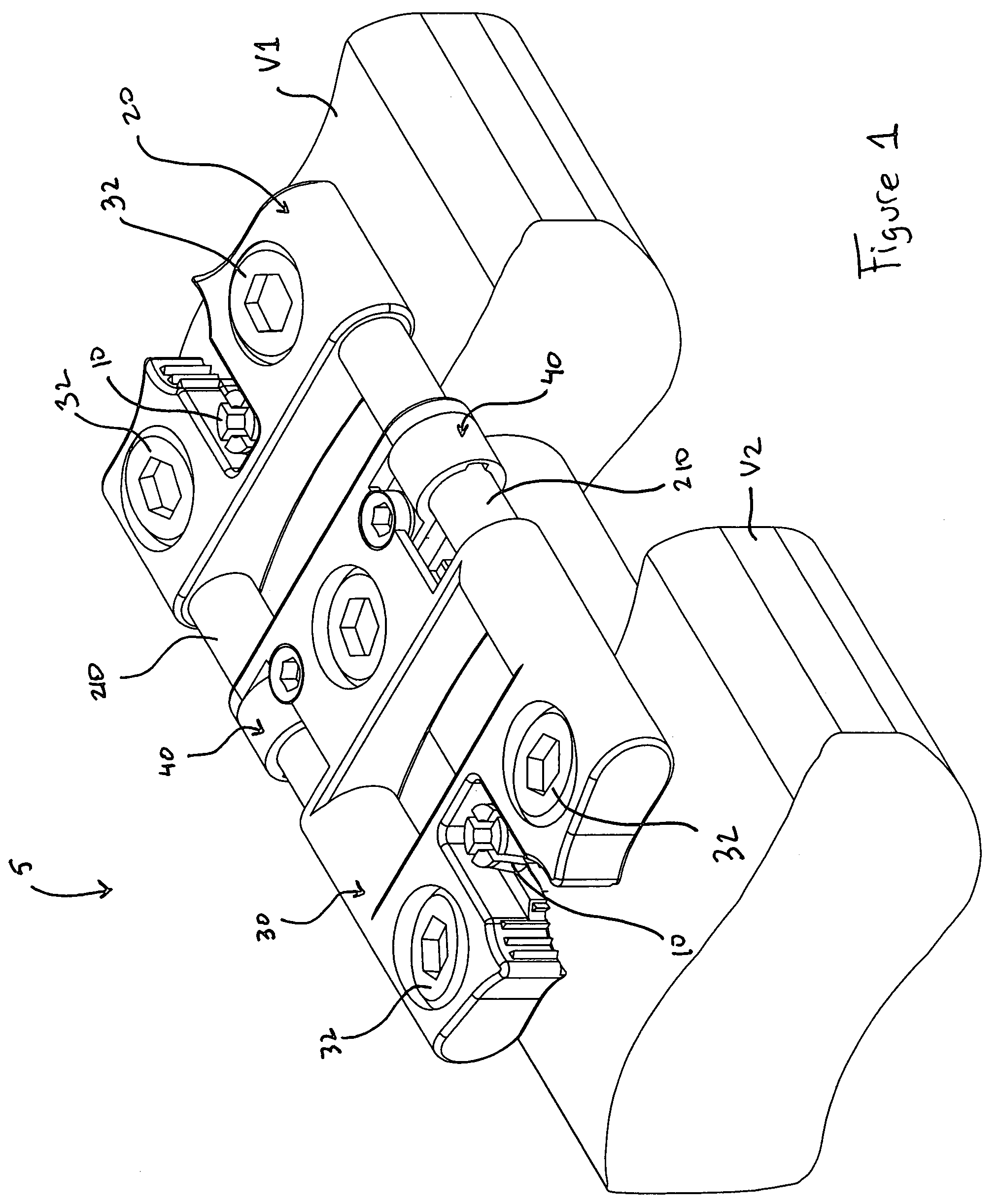Bone fixation system and method of implantation
a bone fixation system and bone technology, applied in the field of bone fixation systems, can solve the problems of further weakening the vertebrae, increasing and affecting the proper placement of the bone, so as to increase the likelihood of its proper placement and weaken the vertebra
- Summary
- Abstract
- Description
- Claims
- Application Information
AI Technical Summary
Benefits of technology
Problems solved by technology
Method used
Image
Examples
Embodiment Construction
[0051]Disclosed is a modular bone distraction screw and a rod-based bone fixation device. While they may be used in any skeletal region, these devices are well adapted for use in the spine. Exemplary embodiments of the fixation device, distraction screw and the method of use will be illustrated in this region.
Bone Fixation Device
[0052]FIG. 1 is a perspective view of a bone fixation device 5 configured to retain bone portions such as cervical vertebra of a spinal column in a desired spatial relationship. FIG. 1 shows the device 5 in an assembled state and mounted on a spinal column C and interconnecting a first cervical vertebra V1 and a second cervical vertebra V2. FIG. 2 shows the device 5 in an exploded state. For clarity of illustration, the vertebrae are represented schematically and those skilled in the art will appreciate that actual vertebrae include anatomical details not shown in FIG. 1.
[0053]With reference to FIGS. 1 and 2, the device 5 includes a first component 20, a sec...
PUM
 Login to View More
Login to View More Abstract
Description
Claims
Application Information
 Login to View More
Login to View More - R&D
- Intellectual Property
- Life Sciences
- Materials
- Tech Scout
- Unparalleled Data Quality
- Higher Quality Content
- 60% Fewer Hallucinations
Browse by: Latest US Patents, China's latest patents, Technical Efficacy Thesaurus, Application Domain, Technology Topic, Popular Technical Reports.
© 2025 PatSnap. All rights reserved.Legal|Privacy policy|Modern Slavery Act Transparency Statement|Sitemap|About US| Contact US: help@patsnap.com



